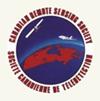基于条件随机场模型的紧凑偏振成像候选漏油检测
IF 2
4区 地球科学
Q3 REMOTE SENSING
引用次数: 0
摘要
尽管RADARSAT星座任务(RCM)的紧凑型偏振合成孔径雷达(SAR)模式为候选溢油检测提供了新的机会,但目前还没有一种有效的机器学习模型明确设计用于利用这种新的CP SAR数据来改进检测。提出了一种基于Wishart混合模型(CRF-WMM)的条件随机场模型来检测CP SAR图像中的候选溢油点。首先,设计了一种“Wishart混合模型”(WMM)作为CRF-WMM中的一元势,以处理候选溢油和无油水的类别依赖信息。其次,我们在CRF-WMM模型中引入了一种新的基于CP统计量的相似性度量,该度量被设计为成对势,从而使具有强空间连接的像素具有相同的类别标签。最后,我们研究了三种不同的优化方法来解决所产生的最大后验(MAP)问题,即迭代条件模式(ICM),模拟退火(SA)和图切(GC)。结果表明,本文提出的CRF- wmm模型比传统的CRF方法能更好地描述溢油候选者,GC算法提供了最佳的优化。本文章由计算机程序翻译,如有差异,请以英文原文为准。
Oil Spill Candidate Detection Using a Conditional Random Field Model on Simulated Compact Polarimetric Imagery
Abstract Although the compact polarimetric (CP) synthetic aperture radar (SAR) mode of the RADARSAT Constellation Mission (RCM) offers new opportunities for oil spill candidate detection, there has not been an efficient machine learning model explicitly designed to utilize this new CP SAR data for improved detection. This paper presents a conditional random field model based on the Wishart mixture model (CRF-WMM) to detect oil spill candidates in CP SAR imagery. First, a “Wishart mixture model” (WMM) is designed as the unary potential in the CRF-WMM to address the class-dependent information of oil spill candidates and oil free water. Second, we introduce a new similarity measure based on CP statistics designed as a pairwise potential in the CRF-WMM model so that pixels with strong spatial connections have the same class label. Finally, we investigate three different optimization approaches to solve the resulting maximum a posterior (MAP) problem, namely iterated conditional modes (ICM), simulated annealing (SA), and graph cuts (GC). The results show that our proposed CRF-WMM model can delineate oil spill candidates better than the traditional CRF approaches, and that the GC algorithm provides the best optimization.
求助全文
通过发布文献求助,成功后即可免费获取论文全文。
去求助
来源期刊

Canadian Journal of Remote Sensing
REMOTE SENSING-
自引率
3.80%
发文量
40
期刊介绍:
Canadian Journal of Remote Sensing / Journal canadien de télédétection is a publication of the Canadian Aeronautics and Space Institute (CASI) and the official journal of the Canadian Remote Sensing Society (CRSS-SCT).
Canadian Journal of Remote Sensing provides a forum for the publication of scientific research and review articles. The journal publishes topics including sensor and algorithm development, image processing techniques and advances focused on a wide range of remote sensing applications including, but not restricted to; forestry and agriculture, ecology, hydrology and water resources, oceans and ice, geology, urban, atmosphere, and environmental science. Articles can cover local to global scales and can be directly relevant to the Canadian, or equally important, the international community. The international editorial board provides expertise in a wide range of remote sensing theory and applications.
 求助内容:
求助内容: 应助结果提醒方式:
应助结果提醒方式:


